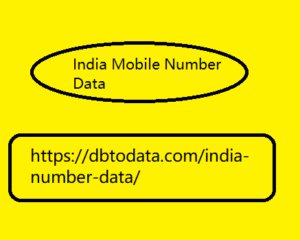Post by account_disabled on Mar 10, 2024 2:33:09 GMT -5
The Meta algorithms that regulate the distribution of content are periodically reviewed to improve their effectiveness, a concept which in this case coincides with the objective of recovering and showing the user the contents that they may find most interesting and engaging (read: that push him to interact). Everything was going well in a situation of almost monopoly, but in the last two years Meta's social applications have suffered the attack of TikTok which introduced a new content distribution model, what I have defined as a communist algorithm , conquering the attention of an audience of over a billion people. So it was necessary to tweak the engine that distributes content, a move destined to radically change our experience of using Facebook.
How the Facebook algorithm works Every time we open Facebook, the India Mobile Number Data algorithm (in reality it is a series of machine learning models) makes four steps to answer the question: which contents are most likely to arouse the interest of this specific user (an operation it does every time for the over 2 billion people who open the app every month)? Inventory : the first step is to retrieve all the posts shared by the user's friends and the pages he follows. Signals : the list of inventoried contents is sifted to identify signals of interest (hundreds of thousands) such as who published the news and when it was published (more detail in the post on positioning factors ) Predictions: Signals are used to predict the user's likelihood of interacting with the posts shown.

For example: probability of a click probability of reading probability of a like, comment or share probability that it is clickbait content probability that the post links to a low-quality page (which the user closes immediately) Score: all these probabilities contribute to generating a score that is given to each piece of content that the user might like. The ones that get the highest scores will be distributed in the user's news feed. This process is followed, within a few seconds, for each piece of content and each person, every time they open Facebook. Connected and non-connected distribution The mechanics of the algorithm have been known for some time, but in recent days Meta has released fundamental information to understand how to optimize one's personal or business activities.
How the Facebook algorithm works Every time we open Facebook, the India Mobile Number Data algorithm (in reality it is a series of machine learning models) makes four steps to answer the question: which contents are most likely to arouse the interest of this specific user (an operation it does every time for the over 2 billion people who open the app every month)? Inventory : the first step is to retrieve all the posts shared by the user's friends and the pages he follows. Signals : the list of inventoried contents is sifted to identify signals of interest (hundreds of thousands) such as who published the news and when it was published (more detail in the post on positioning factors ) Predictions: Signals are used to predict the user's likelihood of interacting with the posts shown.

For example: probability of a click probability of reading probability of a like, comment or share probability that it is clickbait content probability that the post links to a low-quality page (which the user closes immediately) Score: all these probabilities contribute to generating a score that is given to each piece of content that the user might like. The ones that get the highest scores will be distributed in the user's news feed. This process is followed, within a few seconds, for each piece of content and each person, every time they open Facebook. Connected and non-connected distribution The mechanics of the algorithm have been known for some time, but in recent days Meta has released fundamental information to understand how to optimize one's personal or business activities.
